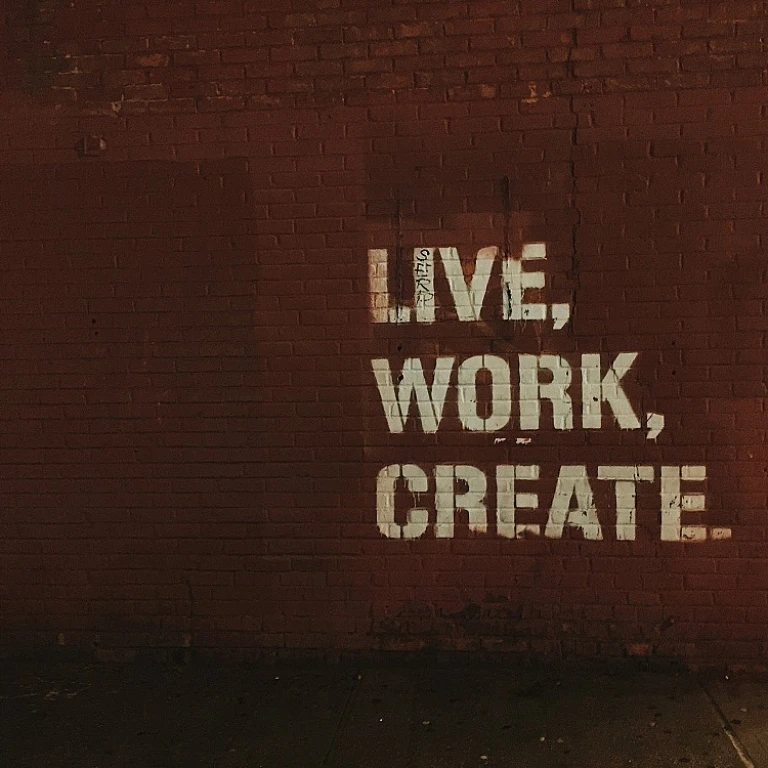The Importance of Understanding Your Employees
Understanding Your Team for Better Workplace Dynamics
Developing a profound understanding of your employees goes beyond knowing just their work roles. It's about uncovering their favorite aspects of their job, what they feel passionate about, and perhaps what might be hindering their day to day productivity. This deeper comprehension is fundamental to fostering a work environment where engagement is prioritized.
Employee engagement is not just a buzzword; it's an essential element for any thriving team, and building this foundation starts with asking the right questions. This could involve icebreaker questions to ease new team members into the company culture or employee surveys to gauge the mood and sentiment within the workplace. Knowing whether employees feel valued and heard can make a significant difference in their output and satisfaction.
Moreover, regular employee check-ins can serve as an effective tool to understand mood shifts and identify areas for improvement. Employee spotlights and regular team-building activities also offer opportunities for team members to share insights into what's working and what might need change.
Incorporating these approaches allows a business to maintain robust internal communications, with each employee knowing their voice matters. When you prioritize understanding each individual's contribution and challenges, it significantly benefits the organization as a whole.
For those seeking to optimize understanding and contribute to better workplace dynamics, consider forming an
employee engagement committee to regularly share insights and implement necessary improvements.
Crafting the Right Questions
Crafting Questions that Resonate
Understanding the nuances of your team members' thoughts and feelings can significantly enhance employee engagement. To achieve this, asking the right questions is paramount. These questions should not only aim to gather information but also to open a space for authentic communication. Here's how to create those impactful questions:
- Start with Icebreakers: Use icebreaker questions during meetings or employee check-ins to make employees feel comfortable and more likely to share their honest opinions. For example, “What’s your favorite way to unwind after a day of work?” or “What’s the best thing about your day so far?”
- Focus on Personal Insights: Incorporating queries that invite employees to share more about their lives, both in and out of work, fosters a stronger connection. Consider asking, “What’s one thing you're proud of in your life right now?”
- Understand Employee Experience: To tailor your questions to uncover meaningful insights, explore how employees perceive their roles and the company’s culture. Questions like, “How do you feel about the current team building activities?” or “What suggestions do you have for improving internal communications?” can be insightful.
- Regular Engagement Checks: Use questions not just in annual surveys, but routinely in less formal settings as well. These check questions could be as simple as “How can we support your work better?” or “Is there anything you'd like to spotlight about your recent projects?”
By creating questions that are thoughtful and intentional, you enable a dialogue that supports a positive work environment. To further enhance your approach, consider exploring additional strategies on enhancing employee experience through effective management.
Integrating Employee Feedback into HR Analytics
Incorporating Feedback into HR Strategies for Greater Insight
Integrating employee feedback into your HR analytics is a powerful way to enhance your organization’s understanding of its workforce. By utilizing responses from employee surveys and engagement initiatives, you can tailor internal communications and evolve your strategies effectively.
To start, leverage favorite team-building activities and icebreaker questions within your survey processes. This not only enriches your data but also improves employee engagement by making participation enjoyable.
- Use employee check and spotlight questions to shine a light on what employees feel strongly about.
- Design specific questions to gauge the current mood and morale within your teams.
- Encourage employees to share insights on their favorite company practices during surveys.
Remember, the goal is to collect data that provides a foundation for understanding team dynamics, addressing challenges, and rewarding performance. Information gathered here will be instrumental in recognizing patterns and aligning HR strategies with your company's objectives.
By embedding real-world feedback into your analytics, you enhance your ability to respond proactively and ensure that team members feel valued and understood. Such responsive dynamics contribute to a thriving workplace, where employee spotlights become part of daily practices.
Innovative Methods for Gathering Valuable Employee Insights
Obtaining meaningful insights from your employees is key in shaping a supportive and productive work environment. Among the effective methods to gather such insights, a blend of traditional and innovative approaches can significantly boost employee engagement and provide clarity on their needs and expectations.
Firstly, consider deploying employee surveys—an indispensable tool for HR teams. Well-crafted questions work as icebreaker questions within a survey, allowing your team to share their candid thoughts without hesitation. Using both quantitative and qualitative formats will help capture a wide range of feedback and facilitate a deeper understanding of your team’s sentiments.
Employee spotlights are another powerful method worth considering. By focusing individually on team members, these initiatives highlight personal achievements while also encouraging open dialogue. Spotlight questions are tailored to elicit insights into personal motivations, work experiences, and individual aspirations, contributing to a more personalized engagement strategy.
Don't underestimate the value of informal check-in sessions. These casual meetings can serve as invaluable know questions moments to delve into your team members' experiences, solicit their favorite aspects of your company culture, and address any concerns that don't necessarily surface in formal settings. These interactions can reveal the heartbeat of your work environment and help tweak internal communications to better serve employee needs.
Team building activities are excellent for gathering insights too. These experiences give an opportunity to observe dynamics and interactions in a relaxed setting which are often reflective of workplace culture. Plus, these activities can function as an ongoing employee check, where managers assess engagement levels and identify potential leadership roles.
Incorporating these tools and techniques into your HR analytics strategy can greatly enhance your understanding of employees, thus fostering a thriving workplace over time. Continuous innovation in your approach to gathering insights will ensure that your employee engagement strategies remain effective and relevant.
Overcoming Challenges in Employee Engagement
Tackling Common Roadblocks
Incorporating employee feedback into your company culture can immensely boost engagement, but it is not without its challenges. Exploring these common hurdles can help you to better address them, ensuring that the questions you pose lead to meaningful insights and action.
Lack of Genuine Engagement
One of the biggest challenges is ensuring that your team members are sincerely engaged when responding to employee surveys. To overcome this, avoid mundane questions. Instead, use favorite icebreaker questions in your surveys to set a more relaxed tone. This approach can subsequently unlock more candid responses that provide an accurate reflection of your team's sentiments.
Building Trust
Another critical aspect is the trust factor. Employees may feel apprehensive about sharing their true thoughts due to fears of repercussions. It’s your job to foster an environment of trust, where employees know their feedback is valued and confidential. Regular employee spotlights highlighting team members' achievements can help in reinforcing this trust.
Overcoming Survey Fatigue
An excess of surveys can lead to the dreaded survey fatigue. This often occurs when employees are bombarded with too many check questions leading to disengagement. To counter this, consolidate feedback mechanisms and prioritize quality over quantity. Incorporating live sessions or employee check-ins as alternatives to constant surveys can maintain the rhythm of feedback without overwhelming your employees.
Cultural Barriers
Cultural differences within a diverse team may also hinder authentic communication. Tailor icebreaker questions to resonate across cultural boundaries and give employees time to share their thoughts in ways they feel comfortable. Understanding these nuances will enrich your employee engagement strategies.
Through a deep dive into these challenges, you’ll be better equipped to refine your approach, making your efforts in capturing honest employee insights more effective. This will ultimately lead to a more engaged and cohesive team, fostering a thriving workplace environment.
Case Studies: Success Stories in Employee Understanding
Real-Life Examples of Enhanced Employee Understanding
Understanding your team better has proven beneficial for various companies, as seen in several documented case studies. These success stories shed light on how well-crafted questions and concrete employee engagement strategies have transformed workplaces.
One company, aiming to improve their internal communications, implemented regular employee check questions. By doing so, they swiftly identified team members' concerns and aspirations. This proactive approach created a more supportive environment, improving overall job satisfaction. Since embracing structured employee surveys, the company observed a significant rise in engagement levels and reported increased productivity across different departments.
Another example is a mid-sized tech firm that embraced the value of icebreaker questions during their onboarding processes. They understood that helping new hires feel valued from day one could foster a positive company culture. By focusing on team building through fun and personal know questions, new employees felt better integrated and more willing to share their best ideas. This not only strengthened the team but also nurtured creative innovations within the company.
Moreover, a renowned retail chain showcased how employee spotlight initiatives could redefine their work dynamics. By routinely highlighting employees' achievements and favorite projects, they cultivated a sense of pride and community. Such spotlight questions made team members feel recognized beyond their daily tasks, thereby boosting morale and loyalty to the company.
In conclusion, these varied approaches – from effective employee check mechanisms to engaging team building activities – illustrate the power of knowing your employees well. These best practices not only help companies create a more inclusive and productive work environment but also lead to sustainable business improvements. For organizations striving to enhance their team's experience, embracing such proven techniques can be a game changer in achieving optimal employee engagement.














